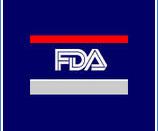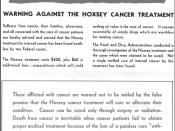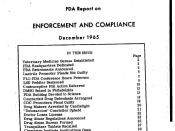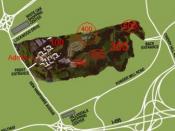Organizing
Organization is an invaluable tool and important function of management. Heska Corporation could be referred to as a learning organization; it is a complex company that requires a high level of organization in order to function optimally. A learning organization "is an organization skilled at creating, acquiring, and transferring knowledge, and at modifying its behavior to reflect new knowledge and insights" (Bateman & Snell, 2007). Being a company that designs and distributes medical technology, a vast knowledge of the industry combined with the latest medical technology is essential to organizational success.
Obtaining knowledge in the veterinary medical industry is difficult, time-consuming, and competitive. There are thousands of researchers all over the world trying to find an answer to the medical mysteries of today. In order to find these answers, studies must be developed, hypotheses must be tested and retested, theories must be proven, reports must be written and published and, depending on the results, patents must be submitted and hopefully issued.
This takes vast amounts of time, money, manpower, and resources to coordinate successfully.
Heska Corporation is dedicated to "developing innovative, research-driven solutions that truly impact the quality of pet care" (www.heska.com, 2006). When an idea is proposed for a new product to be developed, a study is organized to test the product for effectiveness and affordability before any patents are submitted. Because Heska's products are medical-related, they must also follow Food and Drug Administration (FDA) guidelines and be approved before manufacturing can even take place.
Coordination of all of the above requirements involves a high level of organization. Testing of new products is done by scientists in the Research and Development department. Depending on the type of product, testing may last anywhere from a couple of weeks to several years. "Testing medications and vaccines usually requires the most time, due to possible side-effects of the drugs" (www.heska.com, 2006). Once testing is complete, reports must be submitted for evaluation by Heska's financial analysts, United States Patent, and the FDA. The financial department must determine whether the price to manufacture the product is low enough to market the product. A product that costs too much to manufacture may not be worth marketing if the sale price is outrageous. Only pioneering products will sell regardless of price. If the product is simply a variation of another product on the market, it must be marketed at a more reasonable price to turn a profit for the company.
Once the product is deemed worthy of marketing, reports will be submitted for a product patent. It is important that Heska receive a patent on a newly developed product so they can "own" the market of the product. "If they publish reports before receiving the patent, another company could patent Heska's product and own the rights to that product. This not only damages the possibility of profit for the company, but voids the importance of the research effort.
"All of the organization required to complete the release of a new product requires a healthy knowledge of the target medical ailment, the current products on the market used to treat that ailment, the willingness of the target buyer to purchase the upcoming product, and the best way to market this new item" (www.heska.com, 2006). All of this knowledge takes the mind power and research of hundreds of individuals. The individuals responsible for this knowledge include veterinarians, clinical pathologists, research technicians, pharmacologists, and many more.
Equally important to the development of a successful new product is technology. Heska distributes veterinary hematology analyzers for in-house laboratory testing. This means that veterinarians have the ability to collect blood from a sick or injured patient and obtain immediate results to help detect the level of function of internal organs and how ill a patient is. In-house analyzers also help clue a doctor in on how the patient should be treated medicinally. Without in-house analyzers, veterinarians would have to wait 12 or more hours to know the true status of their patients. Such a lengthy wait could have detrimental results.
There are various types of blood analyzers on the market, all of which vary according to price. The most advanced technology will cost a hospital over $100,000.00 for a single analyzer. Heska's objective is to provide high-quality, accurate analyzers at a reasonable price. "Heska has approached blood analyzer manufacturers that currently only market to human hospitals and made changes to allow these analyzer to measure animal blood" (www.heska.com, 2006). This has proven to be an effective measure, giving Heska a great reputation for accurate analyzers. Standards for reproducibility of results are set very high in the human side of medicine. The standards are much less for measuring animal blood. Heska has adopted the human standards and veterinarians are now able to get accurate, reproducible results almost instantly.
In order to provide the best quality analyzer at a reasonable price, Heska needed to find an instrument that was inexpensive to manufacture yet very reliable. Many human hospitals have analyzers that are not overly expensive but must be accurate. The technology used in these analyzers was much more advanced than the technology currently being marketing to the veterinary world. By approaching the manufacturers of these human-hospital analyzers, Heska was able to offer the veterinary world something new: an analyzer that was technologically advanced for about $10,000.00.
Not long ago at the Western Veterinary Conference and Trade Show, Heska challenged its competitors to determine whose analyzers have the best results. Heska made this challenge in front of thousands of veterinarians from all over the United States. Each company was to use one of its analyzers and run multiple blood samples that had been measured by a reference laboratory and manually counted for verification. Once the analyzers had measured the samples, the results would be posted for the public eye to see. Heska's largest competitor, Idexx, withdrew from the competition before the results could be posted. Three other competitors posted their results, none of which were reproducible compared to the reference lab. Heska's analyzer had a result variation of less than one percent. This was a great moment to show the veterinary world how reliable Heska's analyzers are.
The high level of reproducibility is an indication of the vast knowledge behind the research and technology used in Heska's instrumentation. The comparability study being done in public also shows that Heska has great confidence in their products. This would not be possible without the proper organization of veterinarians, technicians, clinical pathologists, pharmacologists, and all the other individuals responsible for researching these phenomenal products. Obtaining the knowledge necessary to know that Heska's analyzers would out-perform the competitors took years of organizing studies of not only Heska's analyzers, but the competitor's analyzers as well.
�
References
Heska Corporation. (2006). Retrieved on July 12, 2007, from http://www.heska.com
Thomas S. Bateman, Scott Snell 2007; Management Leading and Collaborating in a Competitive World 7e





